

On July 24th, Searchlight Pictures released the first trailer for A Complete Unknown. The Bob Dylan biopic follows the legendary singer-songwriter through his early career up to his electric Newport Folk Festival set.
Throughout this period of the early 1960s, Bob Dylan made a name for himself in Greenwich Village’s folk scene, growing to become one of the most consequential musicians in history. Throughout A Complete Unknown’s trailer, many famous New York venues and figures can be seen, shining a spotlight on New York’s rich musical history.

Hotel Chelsea (0:14)
One of the first sites seen in the trailer is the historic Hotel Chelsea. Opened in 1884, the hotel’s 11-story gothic structure looms large over Manhattan’s Chelsea neighborhood. From its beginnings, the hotel’s identity was deeply intertwined with New York’s art scene. Architect Philip Hubert envisioned a housing cooperative that would house a diverse artists’ community. At its opening, the building attracted many well-off professionals, making it “the most profitable and popular of [Hubert’s] enterprises” per the New York Times.
Despite its early success, economic pressures like the crash of 1893 made this model unsustainable. As a result, the Hotel Chelsea was transformed into hotel apartments. In the following decades, the hotel went through a revolving cycle of bankruptcy, buyouts, and renovations. The one constant was its appeal to New York’s artists. Partially due to low rents and close atmosphere, artists of all kinds made the Hotel Chelsea their home during the 40s and 50s. Painters like Jackson Pollock, and writers including Dylan Thomas all inhabited the hotel during this period.

This artistic draw continued into the 1960s, with the hotel becoming home to countless legendary musicians. Of course, Bob Dylan made the hotel home upon his arrival in New York City. Throughout the early 60s, Dylan penned many of his classic songs in the confines of his Chelsea apartment, where he lived alongside his then-girlfriend Sara Lownds. Many tracks off his 1966 magnum opus Blonde on Blonde originate from the Hotel Chelsea. During the blackout of 1965, Dylan penned “Visions of Johanna,” which referenced the atmosphere of the hotel. “Lights flicker from the opposite loft. In this room the heat pipes just cough.” Also said to be written in the hotel are “Sad Eyed Lady of the Lowlands,” and “Sara.”
Throughout the 1960s and 70s, the hotel increasingly became home to rockers and punks. Much of this draw stems from one of the hotel’s most famous residents: Andy Warhol. The hotel acted as Warhol’s muse, inspiring his 1966 avant-garde film Chelsea Girls. The release of this film only increased the hotel’s fame among artists. Throughout the 1960s, psychedelic legends like Jimi Hendrix and Janis Joplin rented rooms in the hotel.
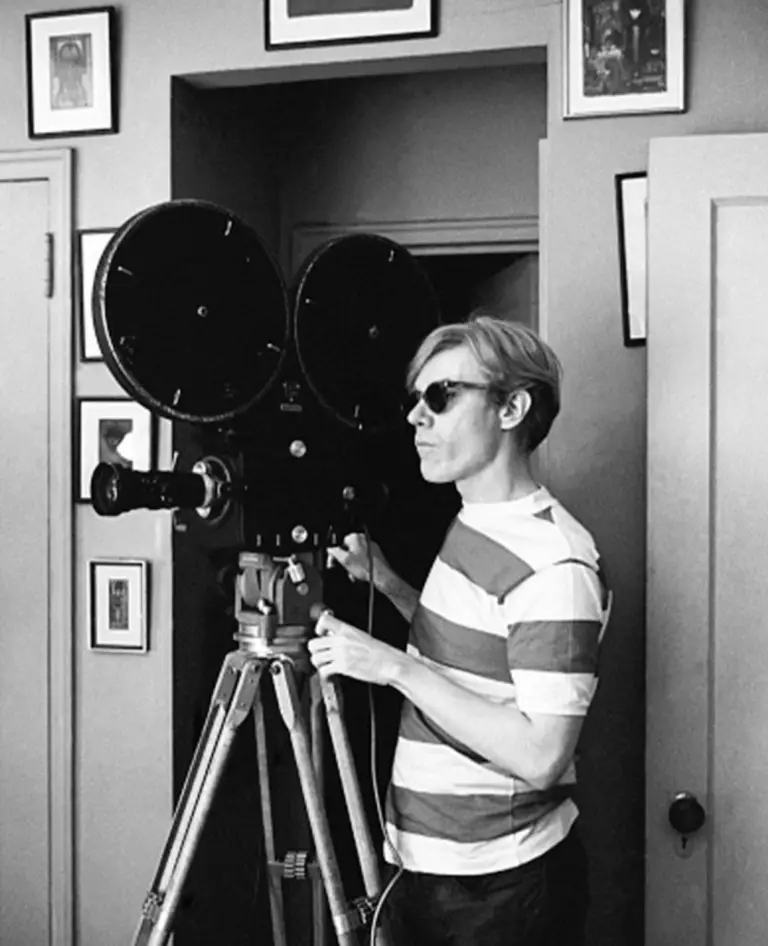
By the 1970s, the hotel’s fame and rent control made it a hub for New York’s punk rockers. By this point, however, the hotel was in decline. Cockroaches infested the rooms, and graffiti covered much of the building’s walls. As a result, some paid as little as $155 a month on rent. Punks like Patti Smith, Iggy Pop, and Johnny Thunders were all drawn to the hotel during this period. In one of its darkest episodes, Nancy Spungeon was murdered in the hotel, with her boyfriend Sid Vicious of the Sex Pistols charged for the crime. Only a year later, Vicious died of a heroin overdose in the building.
Following years of corporate takeovers and renovations, the Hotel Chelsea was converted into a luxury hotel.
Cafe Wha? (0:21, 1:00)
One of the most pivotal sites in the trailer is Greenwich Village’s Cafe Wha?. In 1959, Manny Roth bought an abandoned horse stable in the heart of Manhattan. Upon seeing the site’s dark basement with horse troughs and dung piles, he knew it was a prime location for his new cafe. After renovations, which involved Roth painting and tiling the building himself, the cafe was ready to open. The cafe was advertised as “Greenwich Village’s swingingest coffee house” and quickly became a haven for Manhattan’s Beatniks.
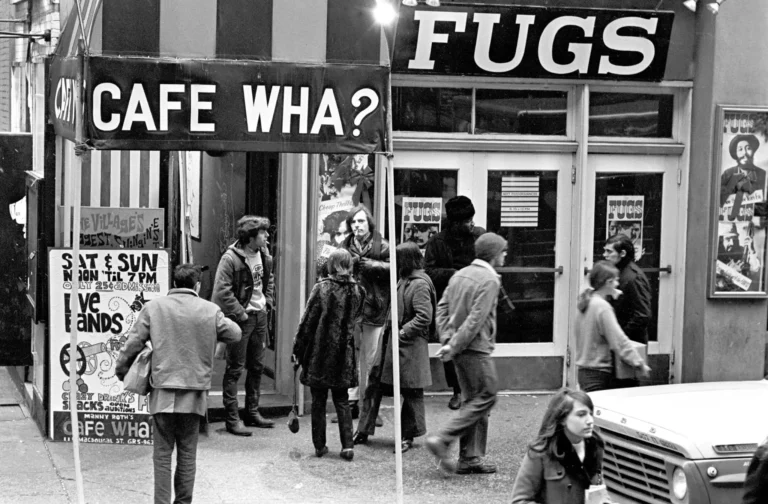
From its start, Roth envisioned Cafe Wha? as a forum for aspiring musicians. The cafe regularly hosted “hootenanny” nights akin to an open-mic night. Roth invited the public to come and perform a couple songs, showcasing their talents to the village’s residents. On January 24th, 1961, a hitchhiker from Minnesota entered the cafe, asking Roth if he could perform at Hootenanny night. The young musician, Bob Dylan, was a smash success at the cafe, kicking off his musical career in New York City.
Throughout the remainder of the 1960s, the cafe became a mecca for future stars of music. In the mid-1960s, Roth hired the Blue Flames as the house band. Led by frontman Jimmy James, the band played 5 sets a night, 6 days a week for next to no money. Chas Chandler, bassist for the Animals, noticed James and believed he had potential for stardom. The two traveled together to England, where James renamed himself Jimi Hendrix, and ascended to rock stardom. Following, the Blue Flames, Roth hired the Castiles to play afternoon sets in 1967. The band, led by their frontman Bruce Springsteen, quickly became a local hit.

Even those who weren’t performing played a major role in music history. One of the cafe’s waitresses was Mary Travers, future member of folk trio Peter, Paul, and Mary. Of special note was Manny Roth’s nephew, David Lee Roth who frequented the cafe. Gaining a love for live music, he went on to found the pioneering hair metal band Van Halen in 1973.
In 1968, Roth ceded control of the cafe to Menachem Dworman. Dworman converted it into Cafe Fenjoon, a venue focusing on Middle Eastern music. In 1987, Dworman reverted the club back to its original Cafe Wha? name. To this day, it remains as one of New York City’s most storied live music venues, hosting daily musical performances.
The Town Hall (0:29)
At the center of the trailer is Dylan’s performance of “A Hard Rain’s a-Gonna Fall” at The Town Hall. The hall began as a headquarters for New York’s suffragist movement in the leadup to the 19th Amendment. The League for Political Education envisioned the site as an egalitarian meeting space where they could educate the public on women’s rights. As a result, upon its opening in 1921, the hall featured no box seats, and no obstructed views, making sure all in attendance were equal.
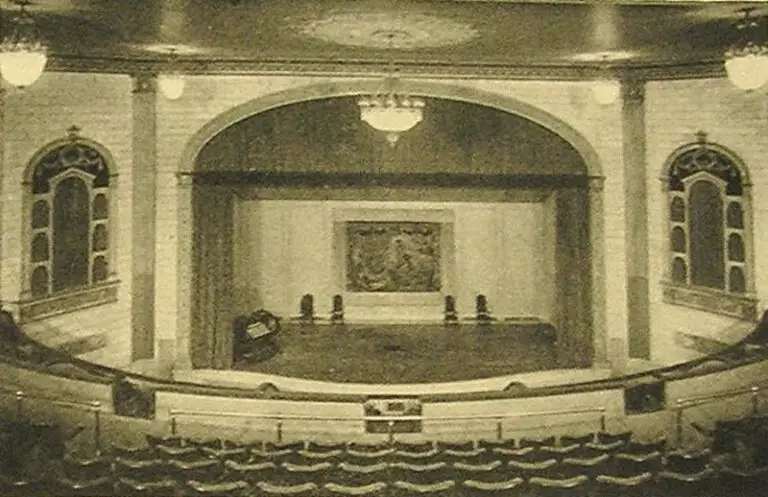
Throughout the 1920s, the venue housed countless classical recitals. Among its first events was Richard Strauss’ presentation of three operatic pieces in December 1921. For the rest of the decade, the Town Hall featured recitals by musicians like Pablo Casals and Andres Segovia, and dancers like Ruth St. Denis. Possibly more important was the venue’s dedication to social progress. It frequently presented public meetings discussing the pressing issues of the day. Whether it was Margaret Sanger’s lectures on birth control or a memorial to Sacco & Vanzetti, the Town Hall remained dedicated to its progressive ideals.
Across the coming decades, the Town Hall sat at the heart of New York’s jazz scene. It regularly hosted performances by legends, including Duke Ellington, Thelonious Monk, and Dizzy Gillespie. During this period, the venue’s public forums elevated it to national fame. In 1935, George V. Denny began to broadcast the Town Hall’s discussions on radio. The program titled America’s Town Meeting of the Air featured discussion of the hot-button issues of the day, highlighting all sides of the argument. The program, intended to continue the hall’s dedication to public education, became one of the first radio talk shows in history. NBC soon syndicated the program, receiving widespread acclaim.
The Town Hall’s importance in A Complete Unknown comes on April 12th, 1963. On that date, Bob Dylan made his first large-concert debut, playing to a crowd of over 1,000. During his 24-song set, Dylan played many self-written pieces, introducing the world to classics like “Don’t Think Twice, It’s All Right” and “Masters of War.” Included in this performance was a rendition of “A Hard Rain’s a-Gonna Fall” off The Freewheelin’ Bob Dylan, which soundtracks the trailer.
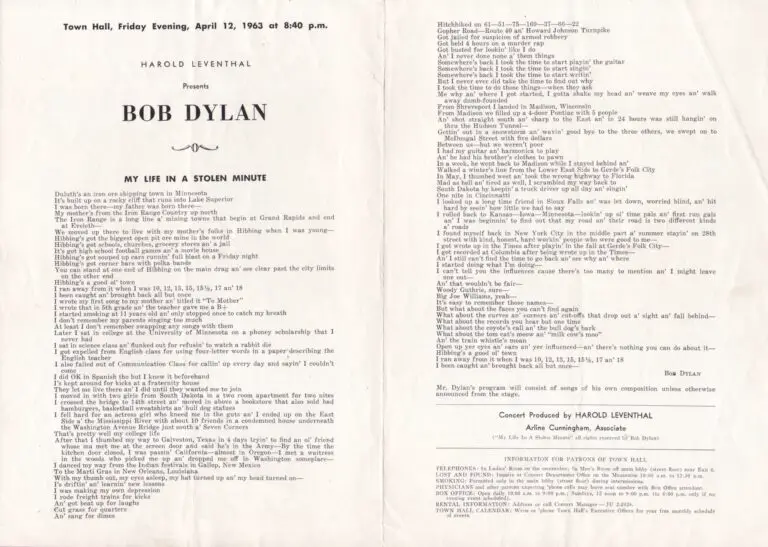
This concert was a smash success that helped cement Dylan as one of the era’s premier songwriters. On April 13th, the New York Times reported on it, stating “He plays excellent guitar and one of the most inventive harmonicas to be heard these days. His voice is small and homely, rough but ready to serve the purposes of displaying his songs. The songs are among the best written in this country’s folk vein since Woody Guthrie stopped composing.”
This period also featured a legendary performance by folk singer Pete Seeger, who is key to A Complete Unknown’s plot. In 1963, performed a children’s concert at the venue, which was later nominated for “Best Recording for Children” at the Grammys.
Throughout the 1970s and 80s, economic uncertainty marked the Town Hall. In 1980, a lack of funding effectively closed the venue. However, a mix of government grants, NYU funding, and individual donations soon provided enough money to renovate and reopen the Town Hall. In 1984, the venue reopened for good. Since its reopening, the Town Hall has continued as a beacon for live music. Everyone from Elvis Costello to Celine Dion has performed at the venue since.
Riverside Church (1:08)
The trailer briefly features Bob Dylan’s performance at an “All-day hootenanny” hosted at the Riverside Church. The church traces its origins to legendary financier and philanthropist John D. Rockefeller Jr. Rockefeller wished to join a church that shared in his progressive social values, so donated $500,000 to Morningside Heights’ Cathedral of St. John the Divine. Soon, the church’s congregation expanded by the hundreds, leaving the facilities too small to accommodate them.
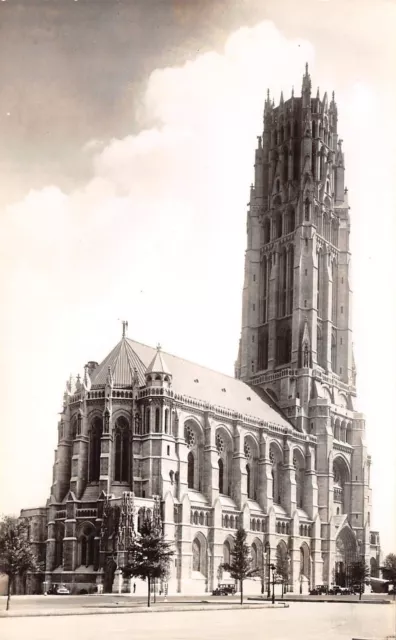
As a result, Rockefeller financed the construction of a new church on Manhattan’s Riverside Drive. Following three years of construction and over $4 million in funding, Riverside Church opened on October 5th, 1930. At its completion, the church was an architectural marvel. It featured gothic elements, like spires, flying buttresses, and slender windows, resembling the monumental cathedrals of France and Spain. Additionally, it remains the tallest church in the US, with its 392-foot tower dwarfing its surroundings.
For the next 20 years, the church welcomed 10,000 visitors a week for religious and social events. During the 1950s, Riverside Church began renovations, including a 15-foot radio tower. Starting in 1961, the church operated its radio station WRVR, which continued operations until 1978.
1961 marks another key moment for the church and for music history. On July 29th, Bob Dylan performed at a hootenanny event hosted by WRVR at Riverside Church. The then-unknown Dylan shrouded himself in mystery, claiming he came from Gallup, NM – in fact he was from Minnesota. During the hootenanny, he played a short five song set. Unlike later performances, none of the songs were written by Dylan himself. Among them were three traditional folk tunes, and two modern pieces written by Danny Kalb and Eric Von Schmidt. WRVR broadcast the performance live as part of a 12-hour music marathon. Luckily for posterity’s sake, a listener taped the live performance, preserving this early moment in Bob Dylan’s career.
The performance features a young Dylan still finding his musical footing. His iconic voice is quiet, sometimes to the point of mumbling. Throughout the recording, his guitar goes out of tune, requiring constant adjustment between songs. This matched with some guitar flubs at the beginning of songs creates a lot of empty space. While listening to the heavily distorted recording, you can hear a musician still anxious at the beginning of his career, but with the seeds of greatness present.
Gerde’s Folk City (1:14)
The trailer features performances by Dylan and Joan Baez at the legendary Gerde’s Folk City. Mike Porco founded Gerde’s foremost as a restaurant, which featured occasional musical performances. This all changed on June 1, 1960, when promoters Izzy Young and Tom Prendergast convinced Porco to rebrand the business as Gerde’s Folk City, a full-fledged music venue. A performance by poet Logan English and singer Carolyn Hester inaugurated the new venue.
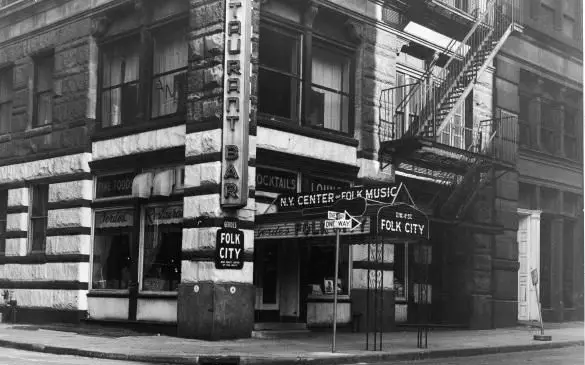
Gerde’s quickly became a haven for Manhattan’s Bohemian crowd and writers for Village Voice who flocked in to hear up-and-coming folk artists. On April 11th, 1961, Bob Dylan performed his first professional set at Gerde’s. The unknown Dylan opened for the legendary blues virtuoso John Lee Hooker. This performance marked one of Dylan’s first chances to display his original pieces. By all definitions, this performance was a success for Dylan, prompting additional shows by Dylan and Hooker. The New York Times reported on these shows in September 1961, stating while Dylan’s outfit and voice were far from pretty, his originality and stage presence marked him for stardom.

Throughout the 1960s, Gerde’s was a necessary stop for any folk singer in New York City. It frequently featured legends like Pete Seeger, the Byrds, Simon and Garfunkel, and Joan Baez. Following a decade of success, Gerde’s moved to West 3rd street, where it continued operations until 1987. In that year, rent tripled, leaving no choice but to close the doors. Although Gerde’s has been closed for almost four decades, it holds a special place in popular memory. In its “Book of Lists,” Rolling Stone ranked it within the top three venues on Earth for its impact on Greenwich Village’s folk scene. Today, Hebrew-Union College inhabits the original location of Gerde’s Folk City.
Pete Seeger
One of the major figures in A Complete Unknown is Pete Seeger, played by Ed Norton. Throughout his career, Seeger cemented himself as the foremost folk musician of his day, as well as an activist. Seeger was born in New York City on May 3rd, 1919. From his birth, Seeger was surrounded by both music and political activism. His father was an ethnomusicologist forced to resign his position at UC Berkeley for his outspoken pacifism during WWI. His mother was just as musical, working as a concert violinist and teacher at Juilliard.
Seeger gravitated towards music at a young age, first picking up the ukulele while at boarding school. His focus soon shifted to the banjo, after visiting a square dance festival with his father in Asheville, North Carolina. In 1938, Seeger enrolled at Harvard, where he consequently joined the Young Communist League. However, he later dropped out to work with Alan Lomax to catalog American folk music. This early job began a lifelong dedication of Seeger’s to preserve America’s folk tradition.
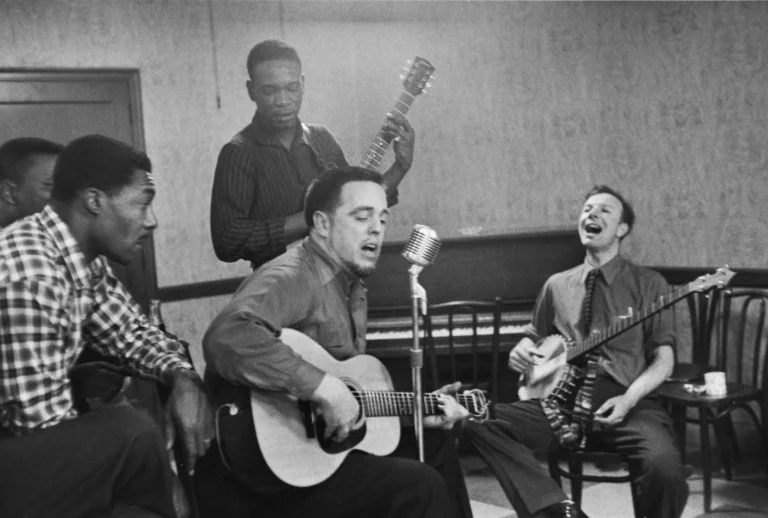
Seeger’s career truly began in 1940, when he embarked on a cross-country tour with Woody Guthrie. On this tour, Seeger and Guthrie performed a plethora of folk tunes to benefit workers and unions across the nation. The 1940s and the start of WWII also began Seeger’s focus on antifascist efforts. Alongside his first band The Almanac Singers, Seeger recorded the 1940 album Songs of the Lincoln Brigade. This album featured songs of anti-fascist fighters in the Spanish civil War. His career briefly paused, as Seeger was drafted into 1942.
Upon his return to the US, Seeger made two fateful decisions. Firstly, he bought a property in Beacon, NY, along the Hudson river. This began a lifelong mission to clean the heavily polluted river. For decades, Seeger raised public awareness of environmental destruction through the annual Clearwater music festival. Additionally, following years of fighting for legislation and corporate accountability, General Electric agreed to dredge the river to help clear it of contaminants.
The second of Seeger’s decisions was the founding of his new group: The Weavers in 1948. After signing to Decca Records, the Weavers became one of the most popular groups in America. During their heyday, the group sold over four million records, buoyed by hits like “Kisses Sweeter than Wine” and “So Long (It’s Been Good to Know Yuh).” In addition, they remained true to Seeger’s mission of musical preservation, recording folk songs from not only the US, but also South Africa and Israel.
The Weavers’ fame came to a sharp halt in the early 1950s. Leaks to the House Un-American Activities Committee (HUAC) claimed that the Weavers members were communists. These accusations and a subsequent sedition investigation forced the group underground. These tensions came to a head on August 18th, when HUAC subpoenaed Seeger. Seeger refused to answer any questions, leading to a 1961 conviction on 10 counts of contempt of Congress.

Bob Dylan entered Pete Seeger’s life around this point. In 1961, Seeger introduced Dylan to John Hammond, who went on to produce Dylan’s self-titled debut. Four years later, Seeger made the consequential decision to invite Dylan to the 1965 Newport Folk Festival. Instead of playing a traditional acoustic set, Dylan brought in amplifiers and electric instruments. The crowd booed and heckled Dylan throughout the set, and according to some accounts, Seeger was just as disappointed. In a 2001 interview, Seeger recalled hating the live mixing, because he could not hear Dylan’s lyrics. He also recalled telling the sound engineer “Damn it, if I had an ax, I’d cut the cable right now.”
For the remainder of his life, Seeger remained dedicated to music and activism. He continuously used his platform to fight for environmental protections and civil rights for African Americans. Throughout his later years, he continued to perform at massive shows, including MSG, Farm Aid, and Newport Folk. After nearly seven decades of musical performance, Seeger passed away on January 27th, 2014.
The post New York’s Musical History in “A Complete Unknown” Trailer appeared first on NYS Music.

![Asher Fulero Explores Organic & Electronic Territory On Latest Solo Album ‘Worlds’ [Listen]](https://utterbuzz.com/wp-content/uploads/2024/11/asher-fulero-explores-organic-electronic-territory-on-latest-solo-album-worlds-listen-238x178.jpg)






